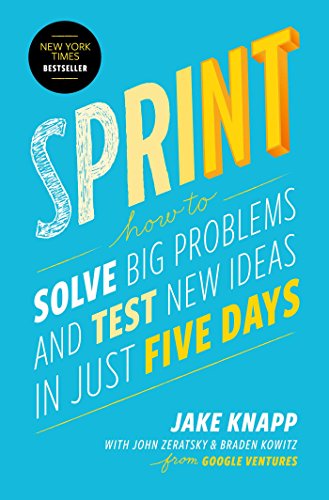Overview of “Sprint: How to Solve Big Problems and Test New Ideas in Just Five Days” Link to heading
Summary Link to heading
“Sprint: How to Solve Big Problems and Test New Ideas in Just Five Days” is a practical guide that outlines a unique five-day process developed by the authors—Jake Knapp, John Zeratsky, and Braden Kowitz—while working at Google Ventures. The book provides a step-by-step framework for solving tough challenges, exploring new ideas, and accelerating performance. It’s designed to help teams focus their energy and creativity on prototyping and testing solutions within a set timeframe, thereby minimizing risk and maximizing efficiency. The sprint process consists of stages: understanding the problem, ideation, decision-making, prototyping, and finally, testing with real users.
Review Link to heading
The book has been well-received for its actionable insights and structured approach to problem-solving, making it particularly valuable for businesses, startups, and teams in fast-paced environments. Its clarity, real-world examples, and the authors’ ability to distill complex processes into manageable steps are often highlighted as strengths. However, some critiques point to the fact that the tight schedule might not be applicable or effective for all types of projects or companies, particularly those that require more flexibility or have less defined problems.
Key Takeaways Link to heading
Time-Constrained Innovation: A five-day sprint can lead to rapid innovation and decision-making, ideal for teams facing urgent challenges or exploring new ideas.
Cross-Functional Collaboration: Bringing together diverse team members to collaborate intensively over a short period can provide fresh perspectives and enhanced creativity.
Focus on Prototyping: Quickly moving from theory to practice by building prototypes helps in validating ideas before committing significant resources.
Testing Ideas Early: Collecting real user feedback at the end of the sprint allows for informed decisions before moving to execution, reducing the risk of failure.
Iterative Approach: Emphasizes iteration and feedback loops, advocating for constant refinement based on tangible user interactions with prototypes.
Recommendation Link to heading
“Sprint” is particularly suited for entrepreneurs, team leaders, product developers, and innovators who thrive in fast-paced environments and prefer structured methods for tackling big challenges. It’s a valuable read for anyone interested in enhancing their team’s problem-solving abilities and fostering a culture of innovation that is both efficient and user-centered.
